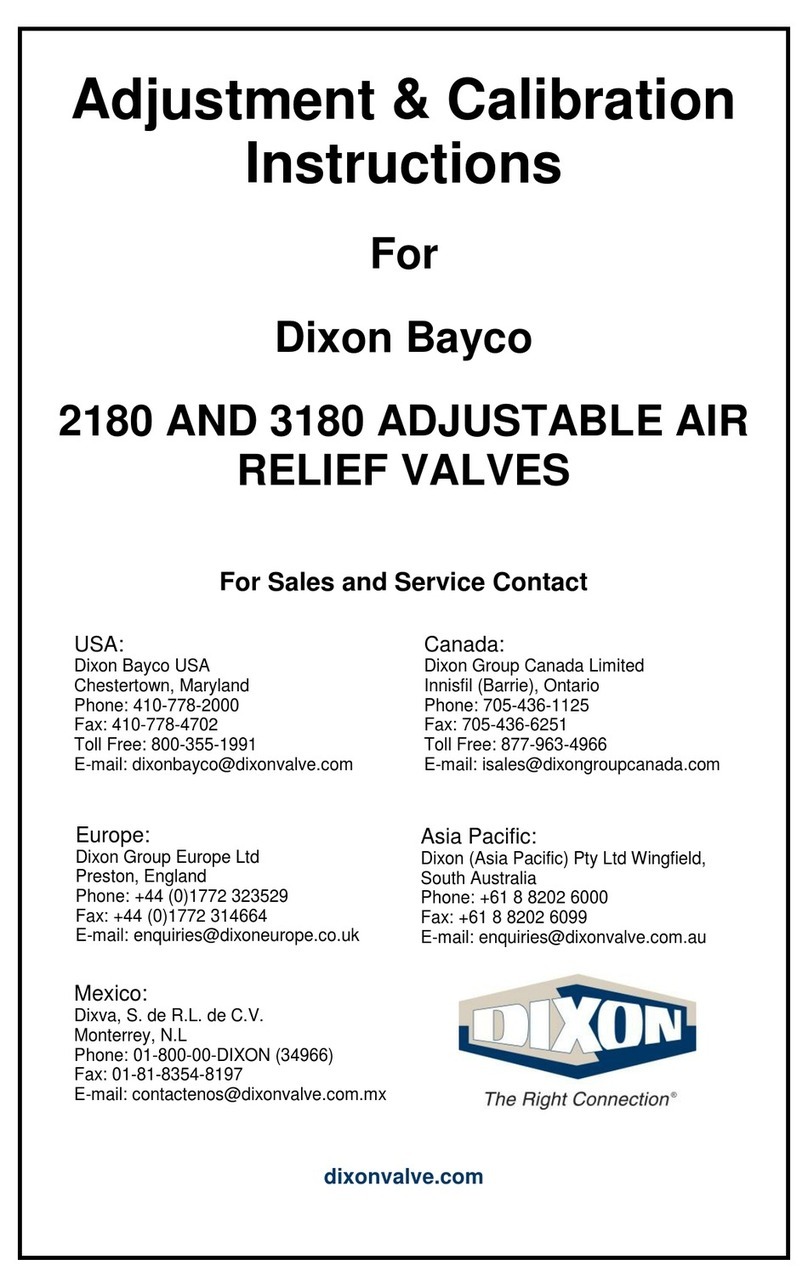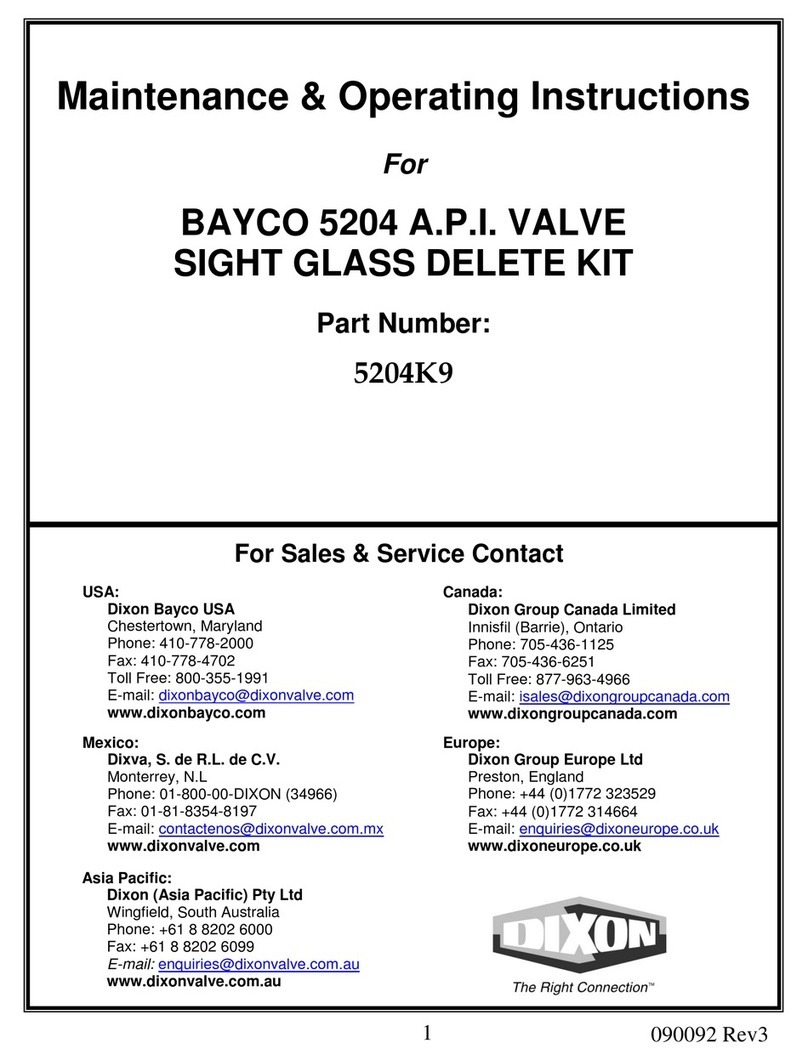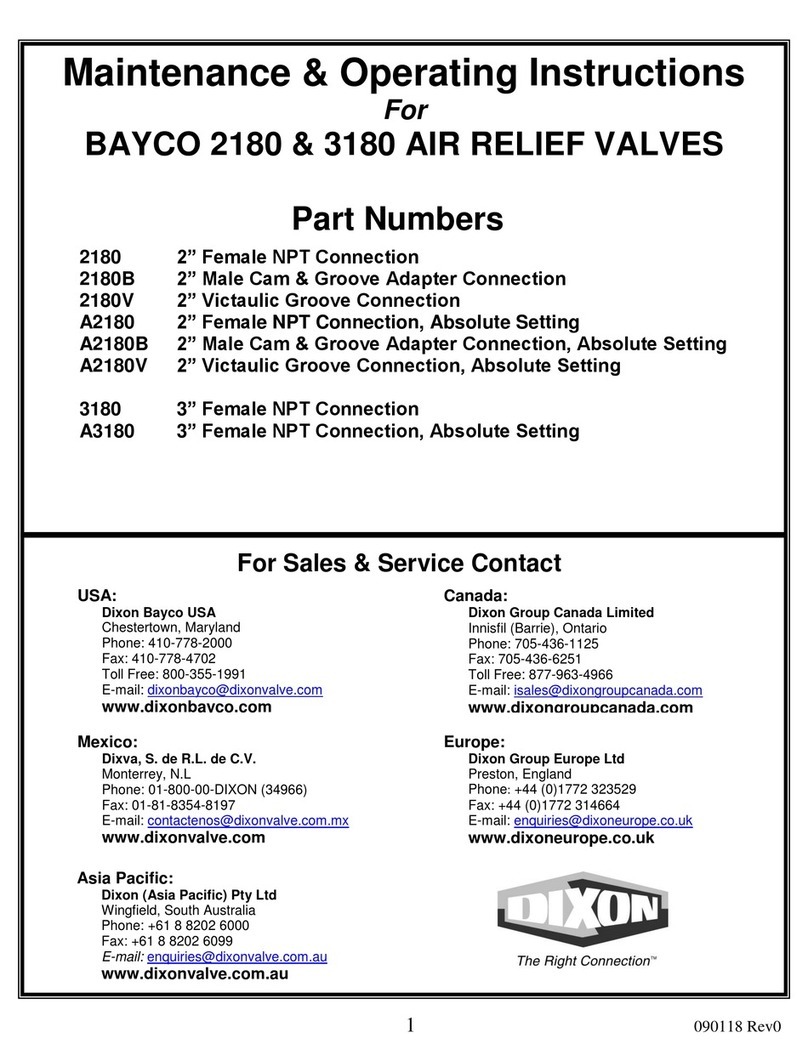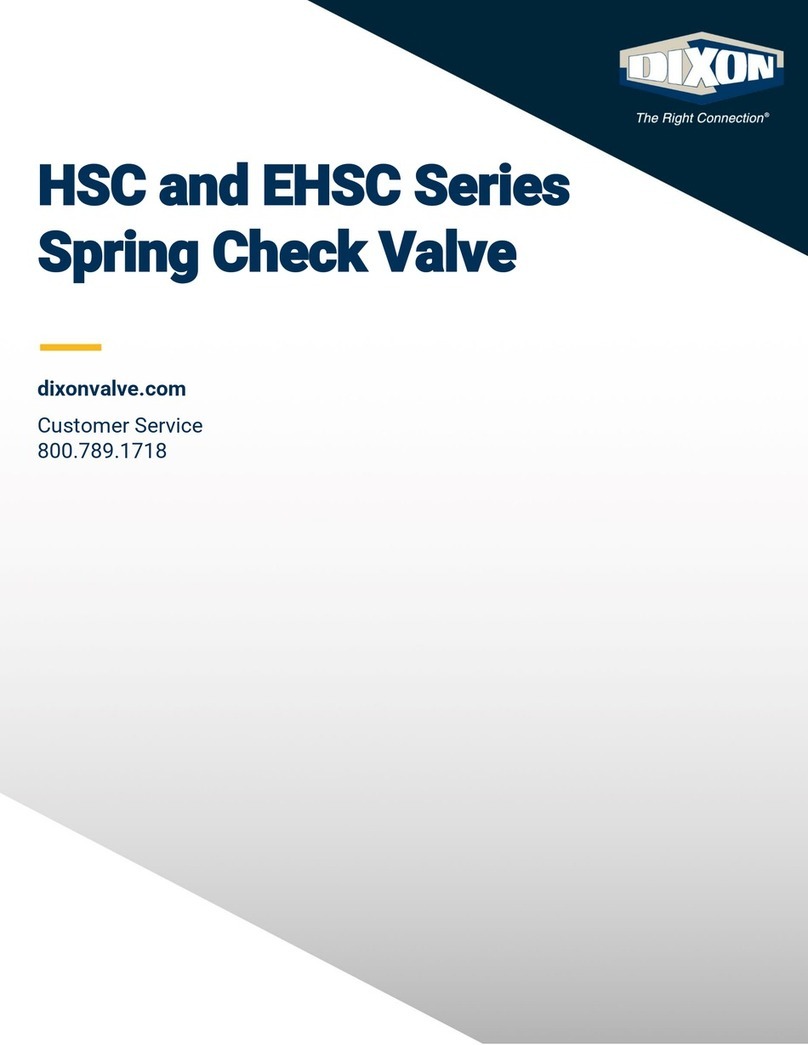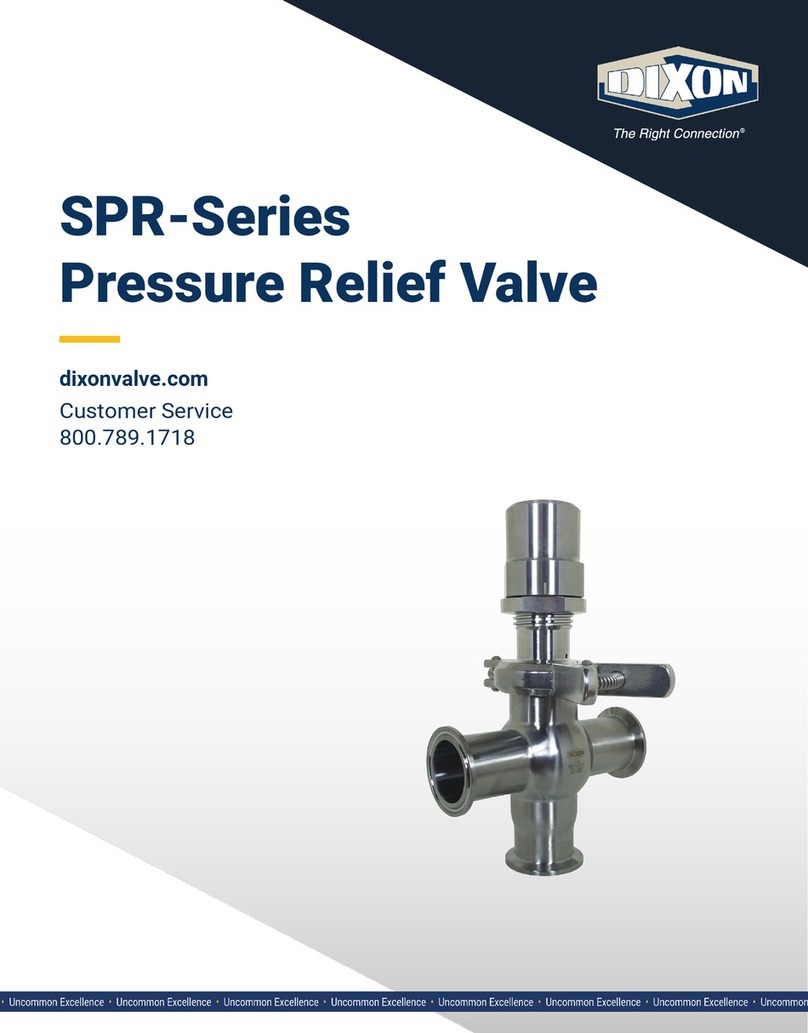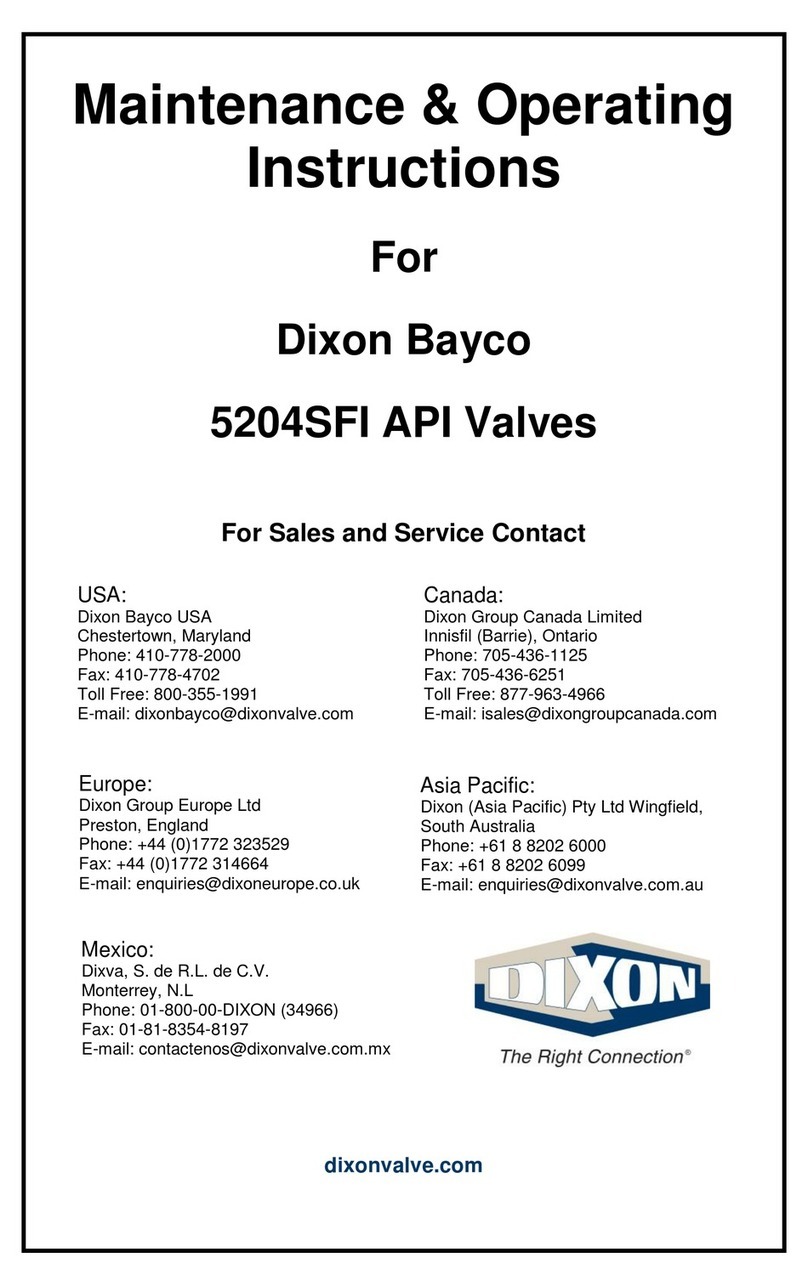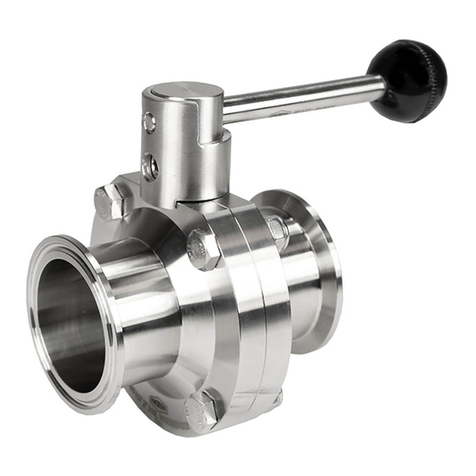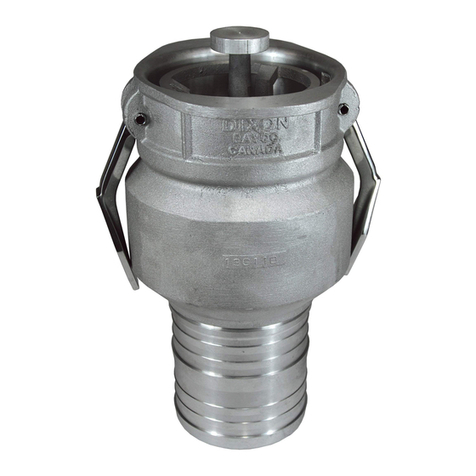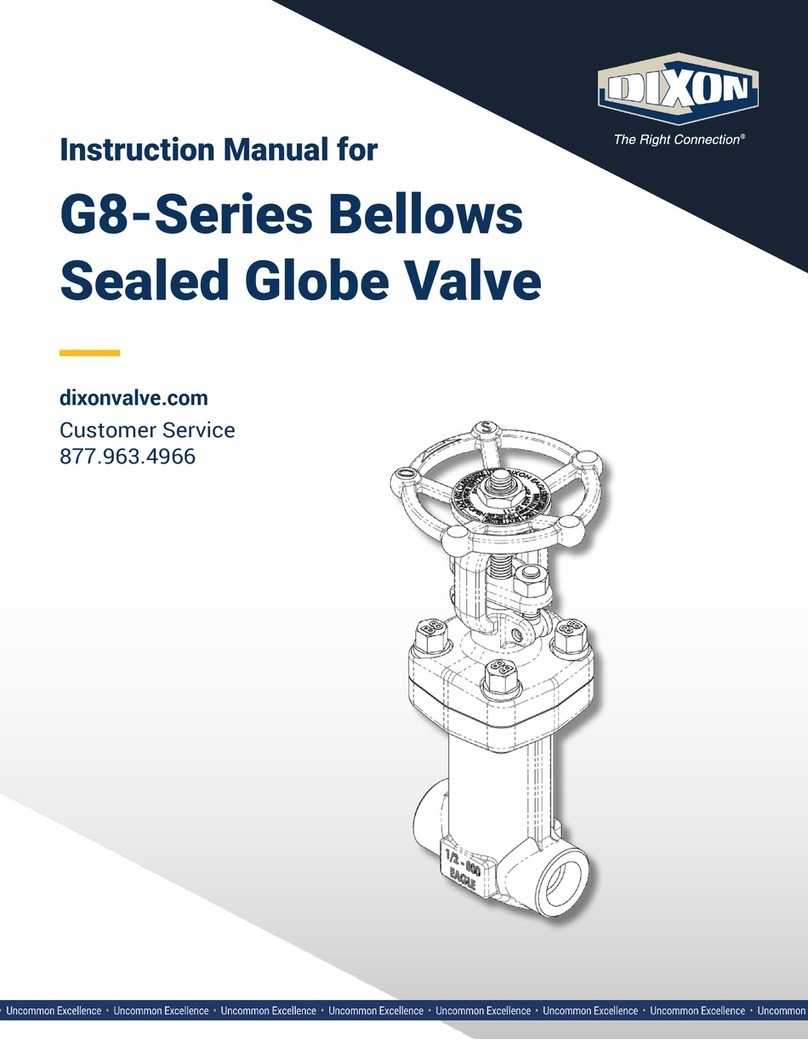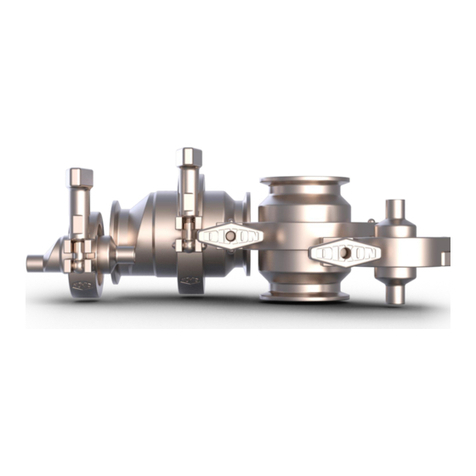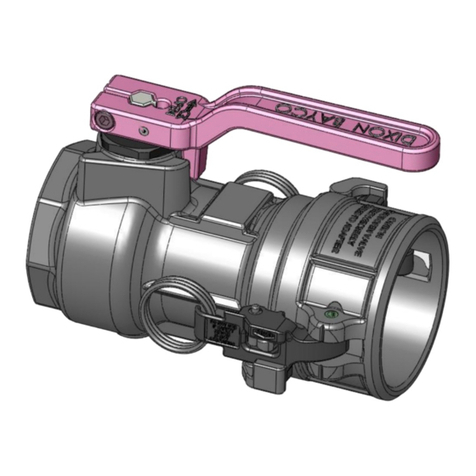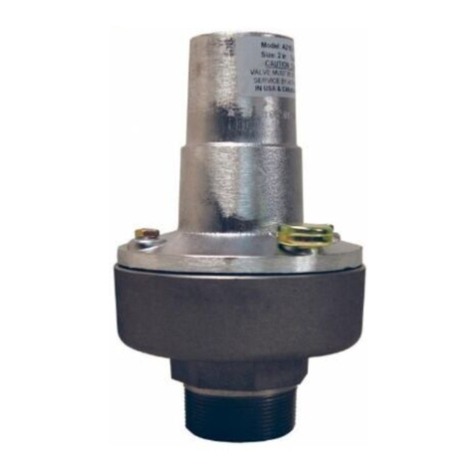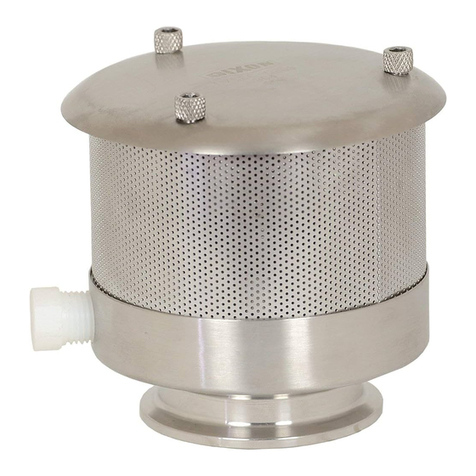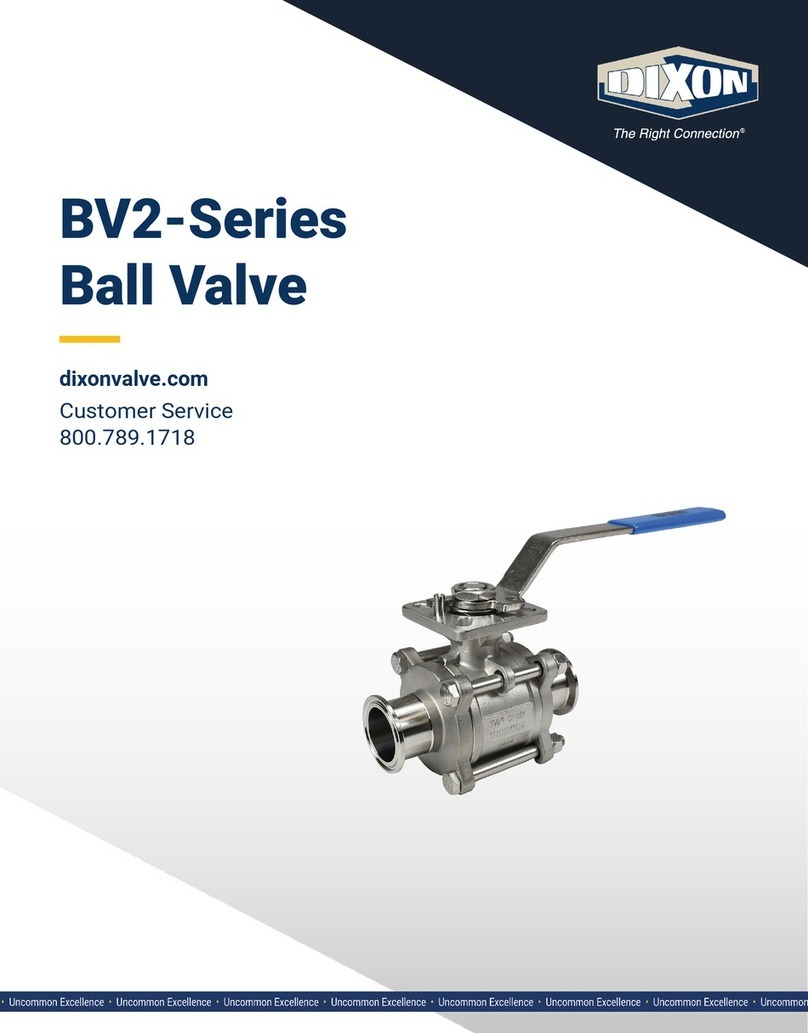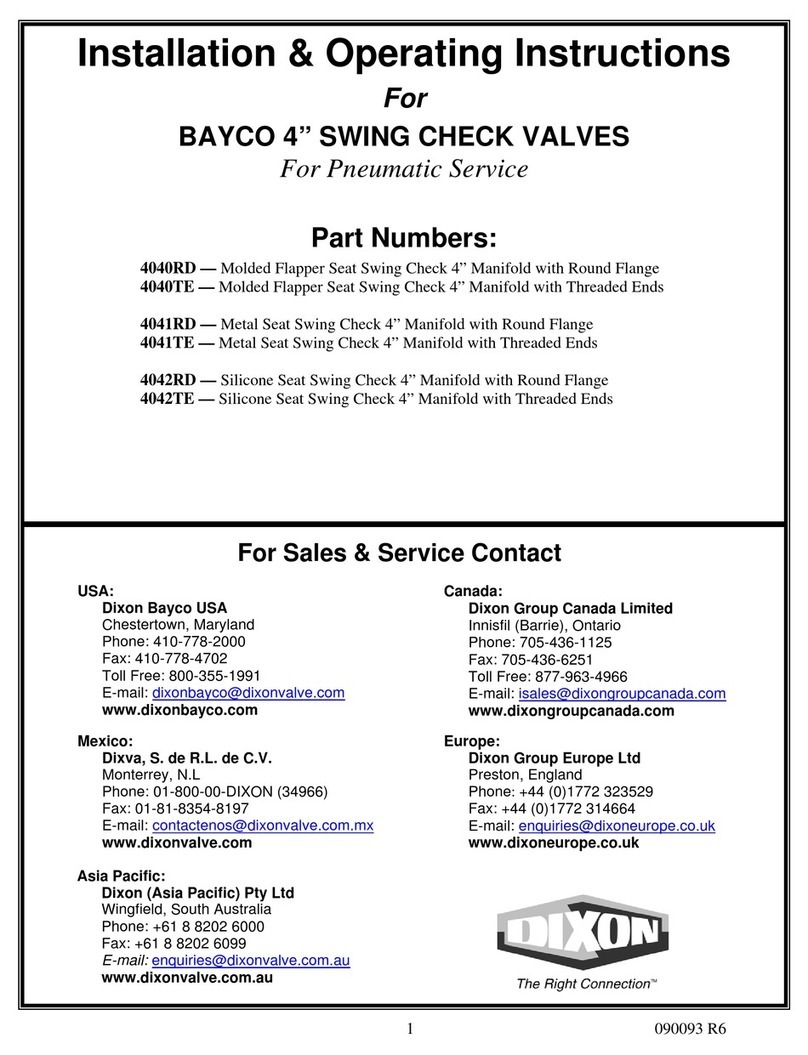
- 2 - 090076 R5
AIR RELIEF VALVE – THEORY OF OPERATION
All Bayco air relief valves are spring-loaded system-pressure actuated devices consisting
of a valve disc held in a closed position against a valve seat by means of spring pressure.
The pressure in the system to be protected always acts on the valve disc and would tend
to open the valve, however the spring load is set so as to ensure that the pressure in the
system, at normal operating pressures, is insufficient to open the valve. However, when
the system pressure builds to a level when the pressure load on the valve disc is equal to
the load exerted by the spring, the valve will begin to open. If the pressure in the system
were to be held at this level, the load acting to open the valve and the spring load acting
to keep the valve closed would remain in equilibrium and the valve would be neither
open nor closed. In such circumstances the valve will tend to flutter on the valve seat and
may release a small amount of air but will not be relieving significant pressure from the
system. This point is known as the Warning Pressure or Cracking Pressure.
If the pressure in the system continues to rise, the load acting on the face of the valve, and
tending to open the valve will also continue to rise and will begin to exceed the load
exerted by the spring, which tends to keep the valve closed. When the opening load, due
to system pressure, exceeds the closing load, due to spring force, the valve will open, and,
as long as the system pressure remains sufficient, will stay open. This point is known as
the Opening Pressure or Set Pressure (also referred to as Rated or Popping Pressure). The
difference between the Crack Pressure and Opening Pressure varies between valves and
is also related to the system flow rate. However the two should not be confused, as there
is a significant difference in pressure between the two points.
If the system pressure continues to rise, the valve will continue to open and will relieve
more and more air until the valve is fully open. At this point the valve will be relieving
close to its maximum airflow rate, further increase in system pressure will show only
relatively minor increases in flow rate. If the system pressure decreases the relieving
airflow rate will reduce and the valve will start to close but will not fully reseat until
some pressure below the Opening Pressure, this pressure is known as the Reseating
Pressure and the difference between the two pressures is known as “Blowdown”.
In practice the valve should be matched to the system to be protected such that the
maximum airflow rate of the valve is never utilized, i.e. the valve should be capable of
relieving a sufficient volume flow rate of air at the opening pressure to ensure that the
system pressure drops significantly. If the valve is open and the system pressure
continues to rise above the opening pressure then the valve is relieving less air than is
being put into the system. This is a potentially dangerous situation that may lead to over
pressurization. Air relief valves should always be matched to the system to be protected
such that the relieving airflow rate of the valve at the maximum allowable system
pressure, and ideally at the Opening Pressure, is well in excess of the system input flow
rate at that same pressure.

